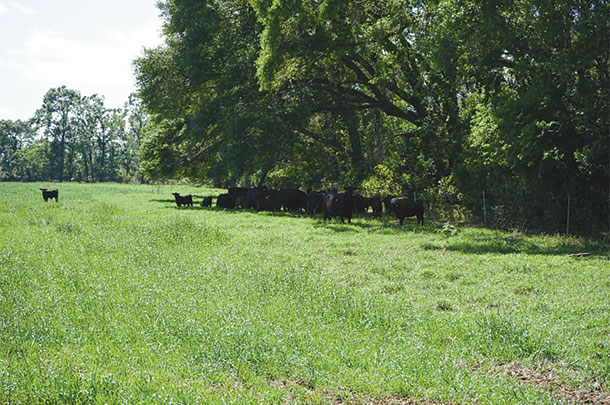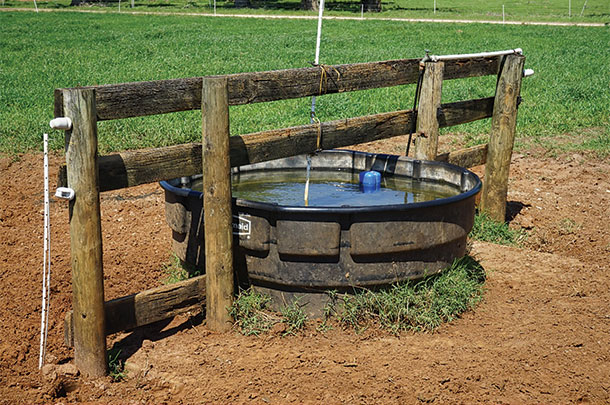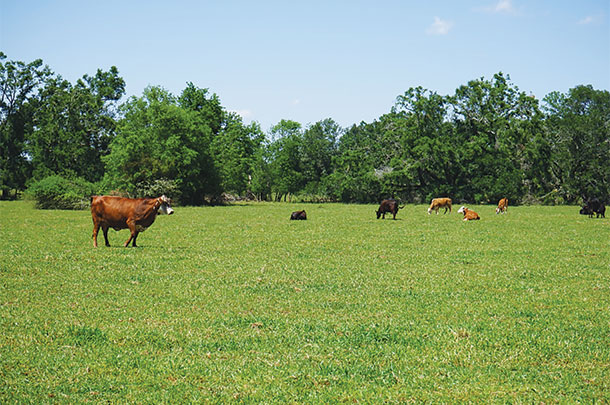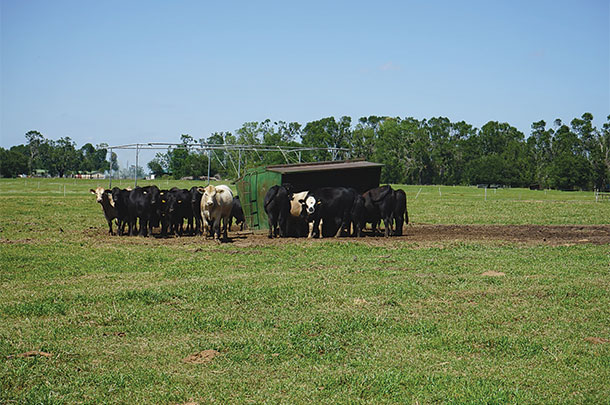Have you ever heard a cattle producer say, “I’m in the cattle business for the money”? I can’t recall ever hearing those words out of a producer’s mouth. Through the years, I have heard:
1. “It’s what I have done all my life, and it’s all I ever wanted to do.”
2. “I just like being around and working cattle.”
3. “There’s no better place to raise a family than on a cattle farm.”
Cattle producers obviously want to make money, but they must deal with bad markets that can be right around the corner, and they continue to be a drought or flood away from a financial crisis. So what is it that keeps them going? It must be in their blood. Why would they be in the business if they did not take pride in their cattle by wanting their cows to maintain body condition, their calves to grow, and all of the cattle having a healthy appearance?
During my career as a researcher conducting grazing research to develop methods and strategies to increase cattle performance on pasture, I learned a few things. First, no matter how much you raise an animal’s plane of nutrition through nutrient supplementation or forage species, you must take effort to minimize stress on an animal to get the most out of them.
Minimizing stress on animals will reap benefits to the bottom line. We may not be able to do everything that the outside animal welfare groups say we should do, but I want to go on record saying that most cattle in the U.S. are comfortable in their environments. Just like humans, pastured cattle are going to have some stress from the environment, but it is both feasible and rewarding to take effort to minimize stress.
A good cattle producer knows their cattle must perform for them to have a chance at making a profit. Cow herds must have high calving percentages, and their calves must have efficient weight gains. Health and nutrition of the herd must be maintained for cattle to perform at a level that allows production goals to be met. So at the risk of “preaching to the choir,” what do producers consistently need to manage?
Mitigating heat stress with shade
 Shade in Florida pastures is critical for cattle to perform at their best.
Shade in Florida pastures is critical for cattle to perform at their best.
Florida’s hot and humid environment clearly makes it critical for shade to be provided in pastures. Ideally, edges of forests or trees on fencerows can provide the best shade. A thick canopy of trees can provide cooling shade, cover from rain and a wind block. There should be sufficient shade for the entire herd during the heat of the day (25 to 30 square feet per animal).
Shade structures may be necessary if there is inadequate shade. These can be purchased from commercial companies, but also can be constructed on the farm or at a local machine shop.
The structures should be approximately 7 to 8 feet tall and be mounted on skids and not permanently anchored into the ground so the structure can be periodically moved to minimize mud and soil compaction. The structures are covered with shadecloth made from woven polypropylene that provides 70% to 80% shade. Of course, shade from trees is a cheaper and better source of shade.
When afternoon temperatures are above 85ºF, cattle will generally graze in the morning and late afternoon and become inactive in the hotter part of the early afternoon.
Without shade, cattle can become heat-stressed (displaying high respiration rates and panting) and recovery in the late afternoon when temperatures decline can be slow and result in cattle not meeting their forage intake needs. All cattle are stressed when faced with temperatures above 90ºF, with or without shade, but providing shade from trees or shade structures can reduce heat stress and minimize its effect on performance.
Clean water
 A high-performance cattle herd will have a clean water source.
A high-performance cattle herd will have a clean water source.
A good cattle producer clearly understands that healthy cattle need a steady supply of clean water. Cattle consume approximately 1.5 gallons of water per 100 pounds of bodyweight daily; therefore, a 1,000-pound cow will consume 15 gallons per day.
A greater surface area of drinking water needs to be accessible to accommodate the larger herd, as cattle do not stand in line very well. Crowding at the water source will cause contamination of water with mud and manure.
Well water in most of Florida is clean and without toxic concentrations of minerals, nitrates and sulfates that can cause death; however, it is always a good idea to have it tested.
Cattle should not have access to stagnant, unclean water that harbors bacteria that either induce illness or can reduce rumen health and function, which ultimately reduces forage intake. This can go unnoticed until cattle start to decline in body condition. It is difficult to blame the water, but this can be the problem and will require moving the cattle to cleaner water.
Adequate forage
 Cattle are pictured on the last day of grazing a pasture before rotation to a fresh pasture. If grazing of this pasture is extended, the cattle will eventually start losing body condition.
Cattle are pictured on the last day of grazing a pasture before rotation to a fresh pasture. If grazing of this pasture is extended, the cattle will eventually start losing body condition.
We generally do not regard the availability of forage in a pasture as being an animal welfare issue, but it can be if cattle body condition scores fall below 4 resulting from an extended time of limited forage availability.
You know this situation – where pastures have 60% to 80% ground cover with noxious weeds and what forage is available is extremely short. The cattle have a body condition score of 4 or less. Outside animal welfare groups want to expose this scenario.
If the cattle producer cannot afford to renovate their pastures or feed their cattle, then it’s time to sell some cattle. Again, good cattle producers will not allow this to happen.
Best management practices of grazed pastures dictate that soil fertility be maintained, a rotational stocking system be implemented and stocking rates used to sustainably meet production goals.
Experienced cattle producers certainly understand these management needs and should use local extension faculty to “fine- tune” management of their pastures to optimize forage growth and persistence.
Supplements
 Nutrient supplementation is recommended to maintain weight gain and body condition during extended periods of inactive forage growth. Photos provided by Glen Aiken.
Nutrient supplementation is recommended to maintain weight gain and body condition during extended periods of inactive forage growth. Photos provided by Glen Aiken.
Providing hay and supplemental feed is the most expensive input cost, which makes the decision of when and how much to feed very challenging. It is understood that cow herds during the winter months on warm-season perennial pastures will need hay and, depending on the quality of hay fed, supplemental protein and energy will be needed.
The amount of hay fed can be reduced if pastures are planted in the fall with small grains or ryegrass. Nonetheless, there will be a need for hay during the winter months to maintain the nutrition of your herd.
What about dry weather patterns during the growing season of warm-season pastures? During a typical dry weather pattern in early to middle summer, it can be acceptable for cattle to have a slight drop in body condition.
However, what if this dry weather pattern turns into a drought? Cows for a spring-calving herd will likely be “taking it off their backs” to nurse their calves. The drop in body condition will accelerate once a pasture becomes overgrazed during a drought, which can adversely affect conception rates and weaning weights.







